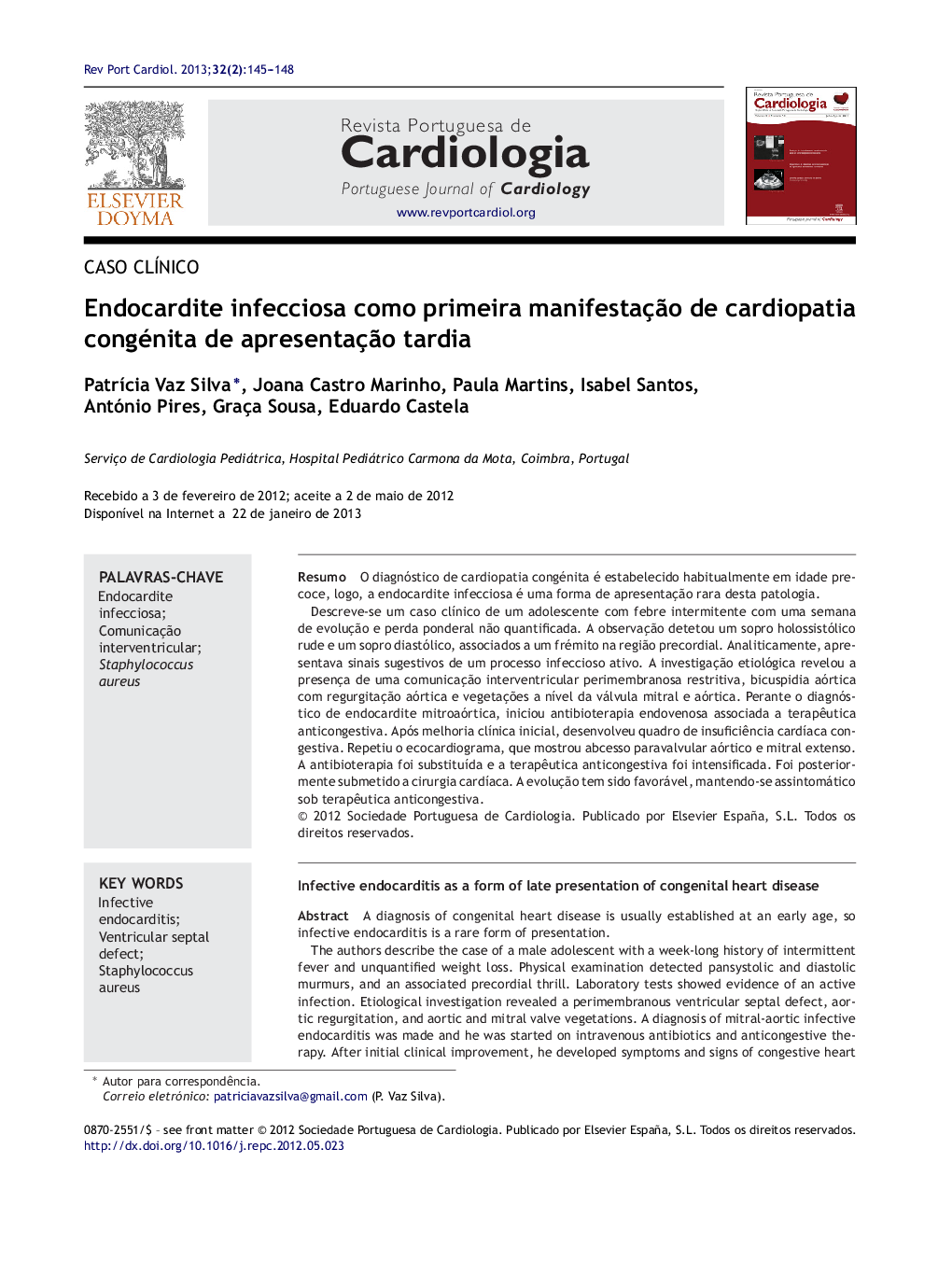| Article ID | Journal | Published Year | Pages | File Type |
|---|---|---|---|---|
| 1126472 | Revista Portuguesa de Cardiologia | 2013 | 4 Pages |
ResumoO diagnóstico de cardiopatia congénita é estabelecido habitualmente em idade precoce, logo, a endocardite infecciosa é uma forma de apresentação rara desta patologia.Descreve-se um caso clínico de um adolescente com febre intermitente com uma semana de evolução e perda ponderal não quantificada. A observação detetou um sopro holossistólico rude e um sopro diastólico, associados a um frémito na região precordial. Analiticamente, apresentava sinais sugestivos de um processo infeccioso ativo. A investigação etiológica revelou a presença de uma comunicação interventricular perimembranosa restritiva, bicuspidia aórtica com regurgitação aórtica e vegetações a nível da válvula mitral e aórtica. Perante o diagnóstico de endocardite mitroaórtica, iniciou antibioterapia endovenosa associada a terapêutica anticongestiva. Após melhoria clínica inicial, desenvolveu quadro de insuficiência cardíaca congestiva. Repetiu o ecocardiograma, que mostrou abcesso paravalvular aórtico e mitral extenso. A antibioterapia foi substituída e a terapêutica anticongestiva foi intensificada. Foi posteriormente submetido a cirurgia cardíaca. A evolução tem sido favorável, mantendo-se assintomático sob terapêutica anticongestiva.
A diagnosis of congenital heart disease is usually established at an early age, so infective endocarditis is a rare form of presentation.The authors describe the case of a male adolescent with a week-long history of intermittent fever and unquantified weight loss. Physical examination detected pansystolic and diastolic murmurs, and an associated precordial thrill. Laboratory tests showed evidence of an active infection. Etiological investigation revealed a perimembranous ventricular septal defect, aortic regurgitation, and aortic and mitral valve vegetations. A diagnosis of mitral-aortic infective endocarditis was made and he was started on intravenous antibiotics and anticongestive therapy. After initial clinical improvement, he developed symptoms and signs of congestive heart failure. Repeat echocardiography showed an extensive mitral-aortic paravalvular abscess. The antibiotics were changed and anticongestive therapy was intensified, and he subsequently underwent surgery. The outcome has been generally favorable, and at present he is asymptomatic under anticongestive therapy.
